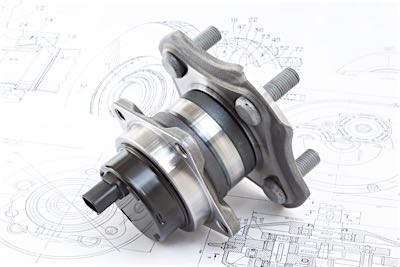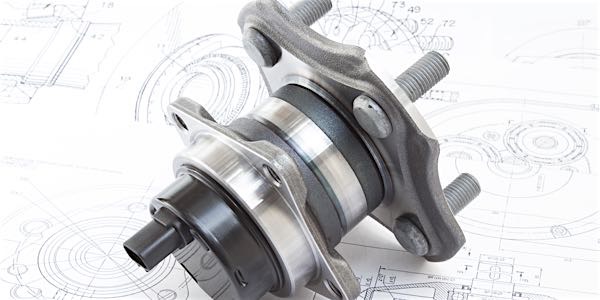
When engineers came up with the idea of putting the wheel speed sensor (WSS) and tone ring inside a sealed wheel bearing hub assembly, it seemed like a great idea. The sealed environment would help protect the sensor and make it less vulnerable to damage or contamination from the outside.
The first of these applications dates back to 1999 on Chevy/GMC and Ford trucks. Since then, sealed wheel bearing hub assemblies with the integral ABS wheel speed sensors have been used on a growing number of GM, Ford, Chrysler and other manufacturers’ cars and trucks.
The wheel speed sensor tone ring is built into the wheel bearing assembly, unlike other wheel speed sensor setups where the tone ring is on the outside of the outer CV joint housing, axle or hub. On later applications, the WSS tone ring is exposed and very vulnerable to corrosion from road salt and road splash. The tone ring can also be damaged if somebody uses a pry bar to separate a halfshaft from the steering knuckle, or drops the halfshaft on the floor. A difference of only a few thousandths of an inch in the height of the teeth on the tone ring can affect the WSS signal.
The signal pulse is generated when a tooth passes under the tip of the sensor. Magnetic sensors can also pick up metallic wear debris from the rotors and pads, causing the sensors to read erratically and confuse the anti-lock brake system. Cleaning the sensors and resetting the air gap can often restore normal operation. But, if the tone ring is corroded or damaged, it must be replaced.
In the case of sealed hub assemblies with the WSS and tone ring inside, the hub provides protection against external corrosion — or at least that’s the goal. But nothing is perfect, and when moisture seeps into the hub, it corrodes the tone ring. The result is an uneven WSS signal that confuses the ABS system.
DIAGNOSIS
The first signs of trouble may be the ABS system kicking in when braking at low speed and/or the ABS warning light coming on. Until you hook up a scan tool and pull the codes, though, there’s no telling why the light is on. The fault may be a bad wheel speed sensor or it might be something else, so don’t jump to conclusions — especially if there are no codes to guide you.
If the ABS light is on and you find a code for a WSS, check the sensor wires for breaks or a loose/corroded connector. Broken wires are probably the leading cause of WSS-related failures. On some vehicles, the wires tend to be brittle and break as a result of fatigue from road vibration and/or steering maneuvers. Replacing the WSS wiring harness is usually the recommended fix for these situations. You could try to patch the broken wire, but crimp connectors are vulnerable to road splash and corrosion, and solder is usually too rigid and allows for cracking. It’s better to replace the wiring harness than risk a comeback.
If there are no codes, but the vehicle owner complains about the ABS system engaging when braking (noise, vibrations and pedal pulsations), the problem is likely a bad WSS. But, which one? This is where a scope can really help you. Connect the scope to the sensor leads and spin the tire by hand. If you get a good, clean signal, move on to the next WSS sensor and so on until you find the one that is generating a bad signal.
If the scope pattern that’s produced by the sensor is flattened (diminished amplitude) or is erratic, it usually indicates a weak signal caused by an excessively wide air gap between the tip of the sensor and its ring, or a buildup of metallic debris on the end of the sensor. A weak signal can also be caused by internal resistance in the sensor or its wiring circuit, or loose or corroded wiring connectors.
A resistance reading that is within range tells you the problem is in the wiring, not the sensor. If the sensor itself is out of range, high or low, the sensor is defective and the sensor or hub assembly (if the sensor is not removable) needs to be replaced.














